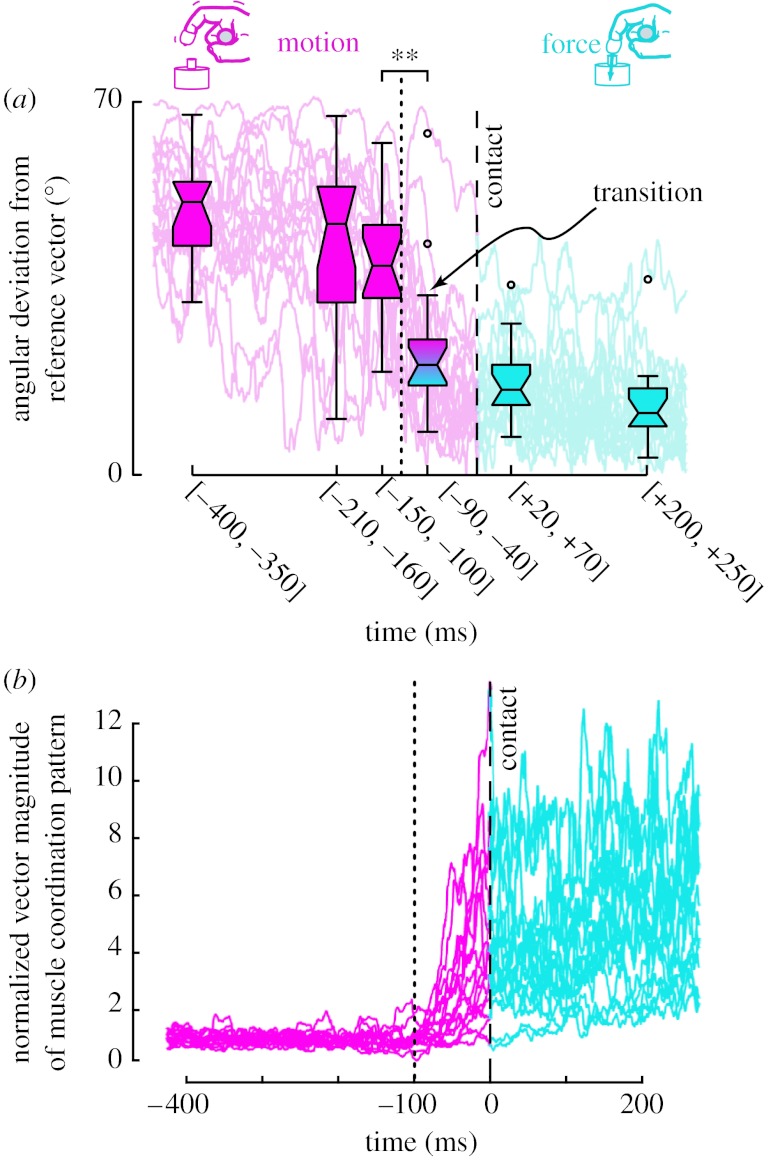Figure 1.
The main experimental findings of our prior work. Adapted from Venkadesan & Valero-Cuevas (2008). (a) The seven EMG signals were assembled into a seven-dimensional EMG vector weighted by the relative strength of the muscles. To track the temporal change in direction and magnitude of the muscle coordination vector, we used (i) the scalar angle between the instantaneous EMG and a reference EMG vector (from static force production 500 ms after contact) and (ii) its Euclidean norm. The data show that the change in vector direction is almost complete by approximately 65 ms before contact (t=0). (b) The magnitude of the EMG vector, however, begins to increase at approximately 70 ms before contact occurs and continues to increase after contact. The EMG vector reflects the vector of joint torques because the EMG vector is related to net joint torques through an affine map as described previously (Valero-Cuevas et al. 1998; Valero-Cuevas 2006).

